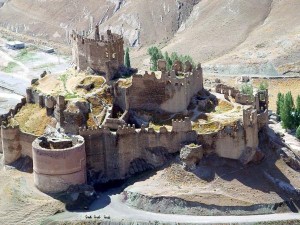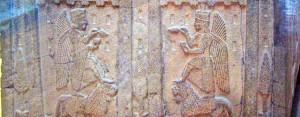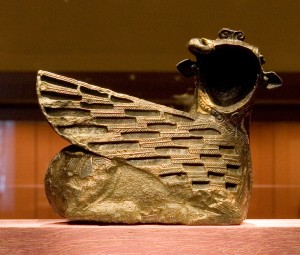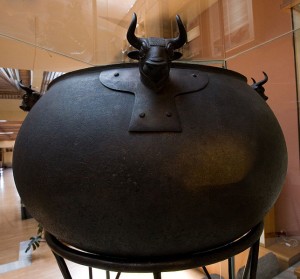An Iron Age Kingdom..
 |
 |
 |
 |
Urartu, corresponding to Ararat, or Kingdom of Van was an Iron Age kingdom centered around Lake Van in the Armenian Highland. Scholars such as Carl Friedrich Lehmann-Haupt (1910) believed that the people of Urartu called themselves Khaldini in respect to their god Khaldi.
The first systematic collection of Urartian inscriptions, and thus the beginning of Urartology as a specialized field dates to the 1870s, with the campaign of Sir Archibald Henry Sayce. The German engineer Karl Sester, discoverer of Mount Nemrut, collected more inscriptions in 1890/1.
Urartu was destroyed in either 590 BC or 585 BC. The end of Urartu was violent; many of its fortresses were burned down. According to Herodotus, the Alarodians (Alarodioi)—apparently the Urartian remnants—were part of the 18th Satrapy of the Achaemenid Empire and formed a special contingent in the grand army of Xerxes I. By the late sixth century, the Urartians had certainly been replaced by the Armenians.
Towns and art works
The people of Urartu were mostly farmers. They were experts in stone architecture; they may have introduced the blind arch to the Near East, and the halls of their palaces and temples may have been the precursor of the Persian apadana layout. They were also experts in metalworking, and exported metal vessels to Phrygia, Iyonia and Etruria. Excavations have yielded two-storied residential houses with internal wall decorations, windows, and balconies. Their towns generally had well-developed water supply (often taken from far away) and sewage systems.
Religion
With the expansion of Urartian territory, many of the gods worshiped by conquered peoples were adopted into the Urartian pantheon. The pantheon was headed by a triad made up of Khaldi (the supreme god), Theispas (Teisheba) god of thunder and storms, as well as sometimes war, and Shivini a solar god. Their king was also the chief-priest or envoy of Khaldi. Some temples to Khaldi were part of the royal palace complex while others were independent structures.
____________________________________________________________________
KEY SITES IN TURKEY: Altintepe, adilcevaz, Toprakkale, Patnos, Van and Cavustepe. Urartu fortresses included Erebuni (present day Yerevan city), Van, Argishtihinili, Anzaf, Cavustepe and Başkale, as well as Teishebaini (Karmir Blur, Red Mound) and others..
MUSEUMS: Masterpieces of Urartu Art are exhibited in the Anatolian Civilizations Museum of Ankara
